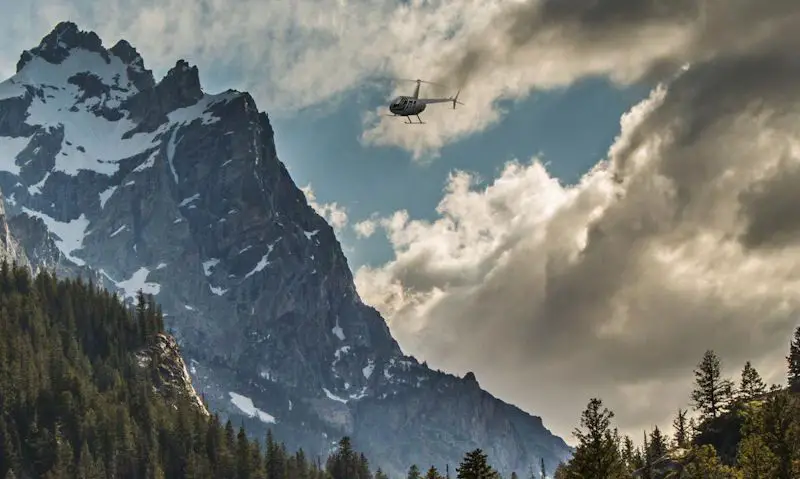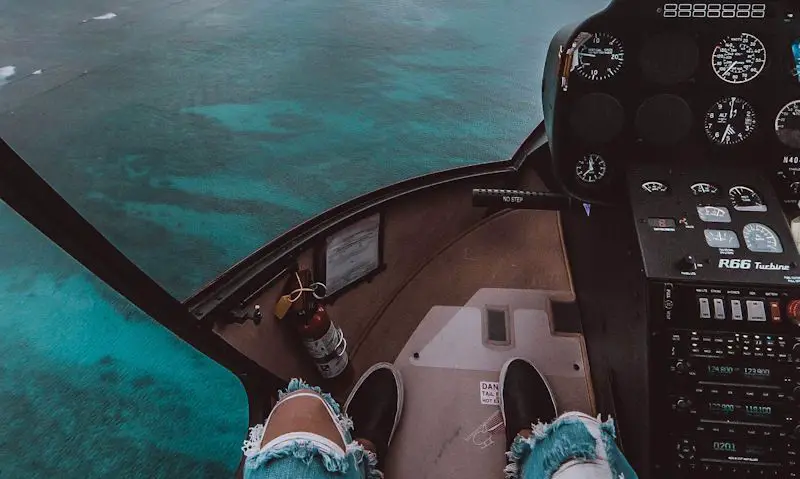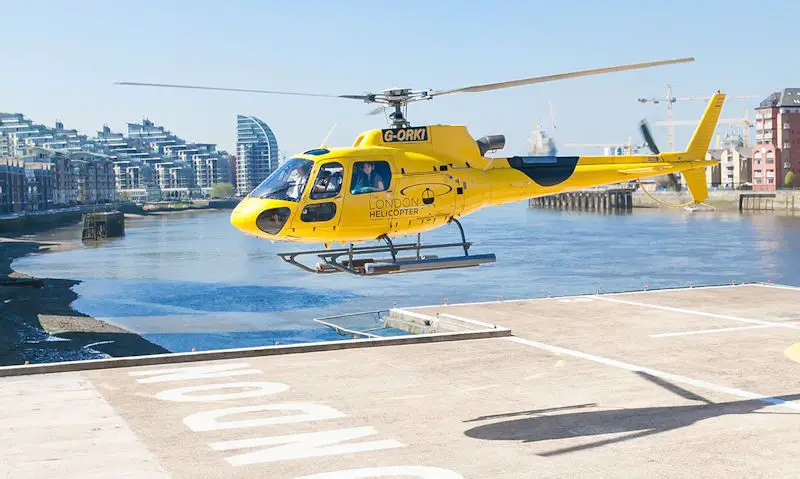Are helicopter rides smooth
Participating in a helicopter ride can have its ups and downs, but you'll find they tend to be on the smoother side.
Helicopter rides can be smooth for the most part, though trembling can be felt inside the cabin, caused by high winds or turbulence. Change of weather 2000 feet up or so is a condition that makes helicopters shake, but so to can flying near to the ground, near cliffs, high rise buildings, mountains or canyons.
To counter the occurrence of a rough helicopter ride caused by windy conditions, operators make use of heavy, turbine powered helicopters.
Not only does the extra weight smooth out the ride for a longer period, a high passenger capacity will help keep things steady in flight.
Where a Robinson R44 helicopter is involved in your helicopter experience day, its a model that is known to be a bit shaky in flight.
On the otherhand, take notice of a Bell JetRanger, LongRanger or 407 for a model well popular for rides - is more smoother than similar types.
Helicopters used in the USA for tours are that of the 6 seat passenger capacity Airbus ACH130.
The model is heavy yet powerful, so is suited to Grand Canyon, Mountains or more fierce conditions.
Most helicopter rides will be smooth for passengers when the weather condition outside is absolutely perfect.
But saying that the weather can be a little windier up in the sky, so shaking can happen.
Turbulence is also a cause that cannot be avoided on most occasions, so if the helicopter shakes for a brief moment - it was turbulence you hit.
No guarantee can be made to passengers for a smooth helicopter ride, but is will sure be for a long duration of the flight.
Most helicopter rides are smooth
When taking a helicopter ride the operator will fly a model that lends itself to steadiness, as its a smooth tour that is needed, not a thrill ride.
However, a smooth helicopter ride cannot be guaranteed at all times as a few bumps with sometimes drastic shaking can occur.
Experiencing a helicopter ride over a city or rural area for example is more likely to be a smoother ride than say a coastal, mountain or canyon helicopter tour.
Proximity to the ground or flying near to cliffs or mountains usually comes into a cross wind or condition that unseen, yet quite fierce for helicopters.
That is not to say its dangerous because experiencing unexpected shaking during a ride is completely normal - and more often than not - very safe.
Helicopter vibration is normal
Because of turbulence, expect to feel as if the helicopter inside the cab is shaking well not dramatically, but in small, drastic trembles.
Trembling can happen once or twice during a helicopter ride and well disappearing as quickly as it arrived.
Vibration inside a helicopter is completely normal, but can feel a little scary as the interior shakes.
Interior is not secured tight as things are allowed to move or shake when a rough ride may occur - so it will be loud.
Saying all that, its probable passengers will take a helicopter ride with no occurrence of vibrations, but instead only experience a comfortable, smooth ride.
Can depend on weather
Where else a helicopter ride goes from smooth to rough in an instant is a change of weather, namely when its becomes windy.
Often in tropical climates such as Hawaii a helicopter ride can be a soothing experience, yet quickly change to a scary helicopter ride in an instant.
That is because wind - not just in tropical countries - is a big cause of helicopter shaking.
Crosswinds is a problem when the helicopter is close to the ground, cliff side or canyons, so its here where those conditions are made worse by weather.
I'll be honest and say a change of weather has been responsible for bringing down a helicopter ride in the past, and can and will do in the future.
So depending on the helicopter model in use, they're likely to make things worse when a heavier, turbine powered helicopter would be safer.
Helicopter-type effect
Helicopters are perfectly fine to fly in a bit of light wind and its no danger whatsoever, but for lighter, pistol powered helicopters - that is not true.
Take the Robinson R22 or R44 series of helicopters; powered by a light pistol engine so you'll feel more shaking if flying in one of these models.
To counter the effect of an unsteady helicopter ride, operators tend to use big, turbine powered helicopters so they can take more wind.
Benefit to a helicopter ride full of passengers is the extra weight will have some effect of smoothing out the flight.
Take for example helicopter rides within the Grand Canyon; the big Airbus ACH130 has a passenger seat capacity of six people - so that helps when flying in to the canyon.
Summary
Participating a helicopter ride can for sure have its ups and down, but you should see more the smooth side over any dramatic turbulence.
However, its still absolutely possible to feel dramatic shaking or hearing the helicopter interior rattling, putting fear into your heart.
Like airliners or smaller fixed wing aircrafts, helicopters can experience turbulence that has no issue in regards to passenger safety.
Helicopter rides that are smooth will be felt in calm, clear sky days when the suns out.
When there's grey clouds in the sky with a touch of rain, its likely a shake or two can happen as it would be a little windier 2000 feet in the air.
Model of helicopter in use can also have an effect on your overall experience.
So depending on the type of helicopter you participate in; the lighter, training type models will not take to well to often the littlest of wind.
Robinson helicopters are pistol powered, so will be a bit wobbly in the air, whereas there bigger bother the R66, or other heavier models will less likely to be shaking in flight.
Guarantees cannot be given for a 100% smooth helicopter ride, so do expect it to occur if only for a short few moments.


